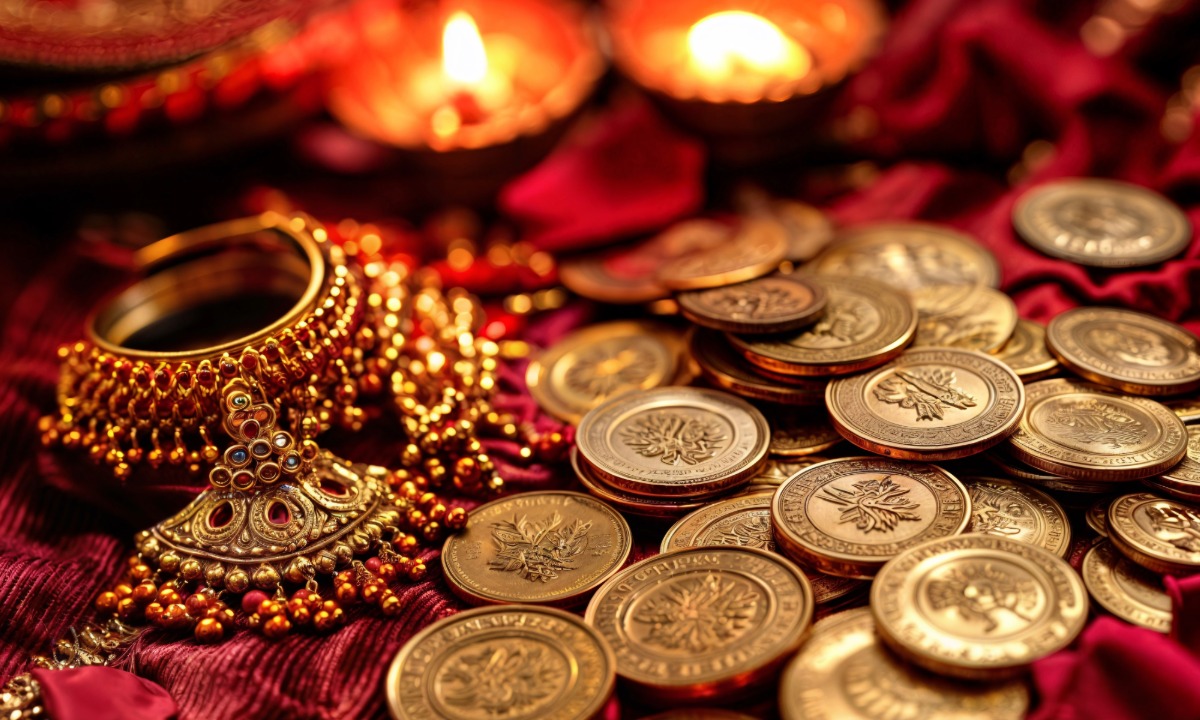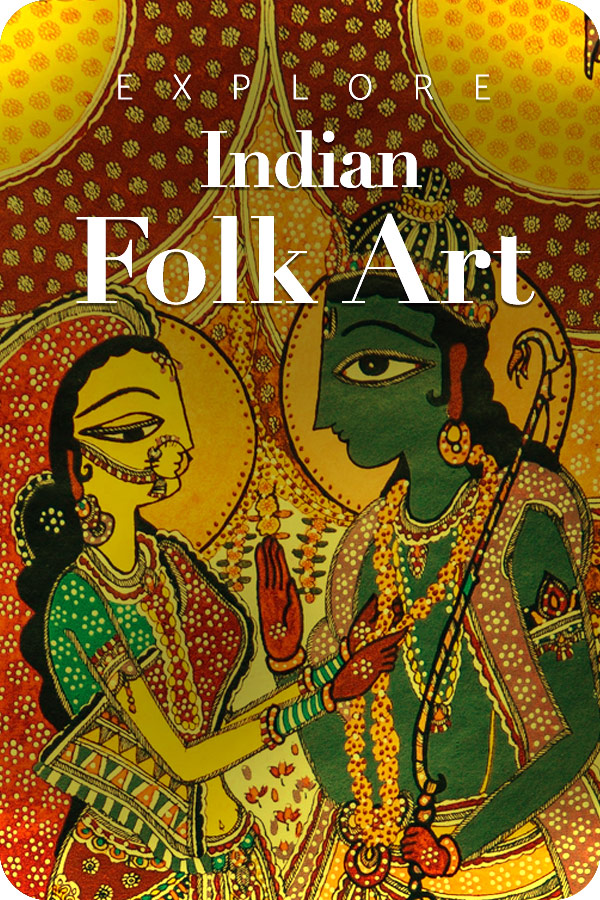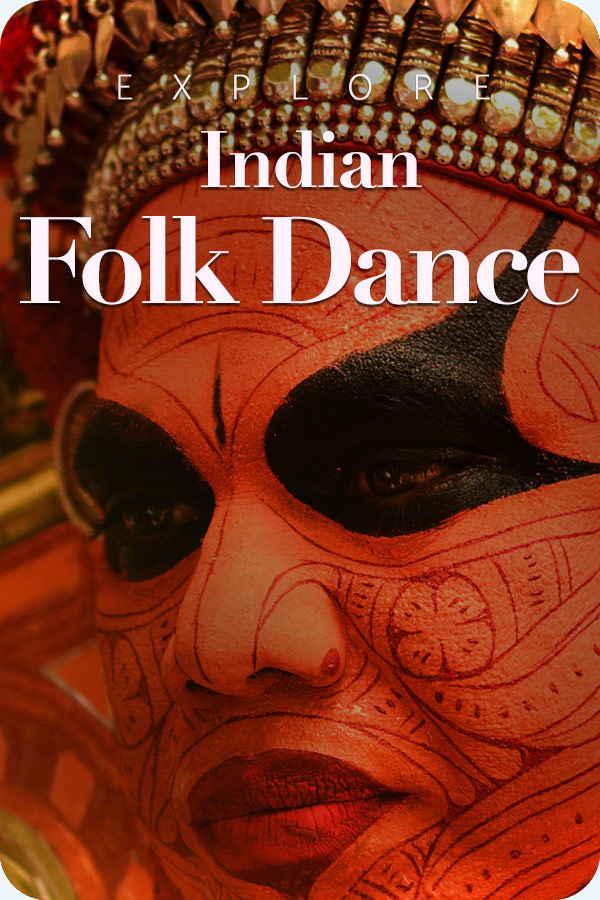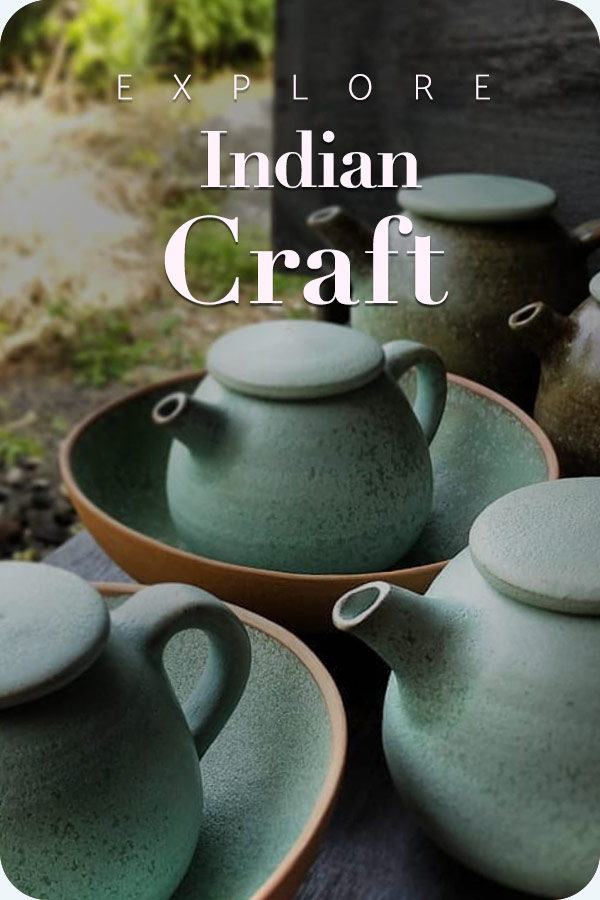
The Significance of Dhanteras in Diwali Festivities
Dhanteras (Dhanatrayodashi) marks the first day of the five-day Diwali festival, dedicated to wealth and well-being. It consists of two words- “Dhan” (wealth) and “Teras” (the thirteenth day of the lunar fortnight), referring to opulence ushered into the home. According to legend, during the Samudra Manthan, Goddess Lakshmi (the deity of wealth) and Lord Dhanvantari (the divine physician) emerged from the waters along with the nectar of immortality. Dhanteras thus associates wealth with health by celebrating Lakshmi’s bounty along with Dhanvantari’s healing blessings.
In one folk tale, a princess, to save her beloved prince from the clutches of Yama (the god of death), adorned the palace with heaps of gold and illuminated the royal abode with innumerable lamps to dazzle Yama. Lord Yama, manifested as a snake, upon arriving at the palace, was awed by the lights and jewelry and decided to retreat. This incident is considered the birth of the tradition of keeping lamps burning to ward off misfortune. Symbolically, the festival makes us inculcate the notion of light overcoming darkness and abundance repelling adversity.
With houses scrubbed clean, rangolis drawn at doorsteps, and oil lamps (diyas) lit everywhere, across India, Dhanteras initiates the preparations for Diwali. The rituals blend spirituality with the anticipation of material prosperity, reinforcing faith in abundance.
Dhanteras 2025 Date, Shubh Muhurat, and Puja Timings
Dhanteras 2025 falls on Saturday, October 18, 2025. According to the traditional Panchang (Hindu calendar), the Trayodashi Tithi (the 13th lunar day of Kartik Krishnapaksha) begins at 12:18 PM on Oct 18 and ends at 1:51 PM on Oct 19. The auspicious Pradosh Kaal (evening twilight period) runs from 5:48 PM to 8:20 PM IST on Oct 18, and within this, the prime Dhanteras Puja Muhurat is 7:16–8:20 PM. Astrologically, the period is known as Vrishabha Kaal (Taurus period), roughly 7:15–9:11 PM, and is considered most favorable for the Lakshmi-Dhanvantari puja. Vedic experts note that favorable planetary alignments (e.g., a strong Venus and Jupiter) make this year’s Dhanteras particularly potent for wealth-invoking rituals.
The most non-negotiable ritual is lighting lamps in the evening. Families light 12 diyas indoors and one special “Yamadeepam” outside at the main entrance. This honors Yama (Lord of Death) and is believed to protect loved ones from the wrath of death. The glowing diyas are said to repel negative energies and illuminate the path for Goddess Lakshmi’s holy steps into the home.
Traditional Rituals and Customs Observed on Dhanteras
The most rudimentary preparatory regime involves cleaning and decorating houses. With bright rangoli patterns designed along doorways, rows of earthen diyas and electric lights are placed to welcome the divine into the human abode. Often, altars are set up on elevated platforms facing the idol or image of Goddess Lakshmi, accompanied by Lord Ganesh. The two deities are also complemented by some representations of Lord Dhanvantri, and in some instances, even Lord Kubera is placed along. The sanctum of the gods is also elaborately decorated with flowers, a kalash (water pot topped with mango leaves and a coconut), and incense, symbolising abundance. As far as the offerings are concerned, rice, turmeric, kumkum powders, sweets, fruits, and currencies are used. Many people also offer gold or silver coins and new utensils or jewelry to signify wealth.
The puja vidhi (ritual procedure) typically begins by invoking Lord Ganesha to remove obstacles, as he’s referred to as ‘vighnaharta’. Mantras praising Lakshmi and Dhanvantari are recited as lamps are lit, mainly a ghee lamp, and the Dhanvantari mantra (“Om Dhanvantaraye Namaha”) is recited 108 times, praying for health and longevity. Prayers are followed by aarti, i.e., the ritual waving of lighted lamps. With the family singing the hymns seeking blessings, the aarti is separately performed for each deity. Business families often offer their account books to the goddess, symbolically inviting her to bless the year’s work.
After the puja, the blessed offerings are distributed to all members as prasad. Even after the puja is done, the Yamadeepam continues to burn throughout the night. Additionally, a four-faced mustard-oil lamp is placed in the southwestern corner outside the home to honor Yama and to ensure the family’s protection from accidents or death.
What to Buy on Dhanteras 2025: The Auspicious Shopping List
There is a tradition of purchasing new items on Dhanteras that symbolizes inviting wealth into one’s life. Gold and silver are considered the most auspicious purchases. People buy gold ornaments, coins, bars, or silverware, with the hope that it will multiply prosperity. Specific coins that are struck with images of Goddess Lakshmi or Lord Kubera are favoured.
Beyond metals, useful household items are also auspicious buys. Utensils, especially silver, brass, or copper, such as new kitchen pots, pans, or dishes, are believed to accoutre the home with wealth. That said, a popular belief is that anything acquired or purchased on Dhanteras brings affluence. In contemporary times, electronics and appliances are very much a part of items that are purchased by people on this occasion. Many people like to buy smartphones, laptops, televisions, or home appliances during this time. New furniture, home decor, or artifacts can also be bought to reinvigorate the facade of the household and induce an aura of positivity. Many devotees also bring home Lakshmi-Ganesha idols or pictures on Dhanteras to establish a permanent shrine at home. Modern gift ideas for Dhanteras include donating to the poor or gifting sweets, which is believed to multiply good karma. Many spiritual items, like a Kuber yantra or Dhanvantari yantra, are kept in the cash locker for obtaining blessings. New clothes and sweets or dry fruits for family and friends are also customary, as they symbolize sharing and spreading joy.
One must also be careful about the items to avoid. According to tradition, sharp objects (knives, scissors, needles) should not be bought on Dhanteras as they are believed to “cut” the flow of prosperity. Likewise, iron or steel utensils are generally avoided, as iron is associated with Shani (Saturn). Ghee and cooking oil, though essential, are said to be inauspicious to purchase on Dhanteras. Black or leather goods are also avoided, since black as a colour is often linked to negativity and leather to Saturn’s influence. In case pots or vessels are bought, it is generally suggested to bring them home filled with grains or sweets. To sum up, shopping during Dhanteras primarily focuses on items that signify wealth, health, and good fortune.
Cultural Beliefs and Regional Celebrations Across India
Dhanteras is a nationwide celebration, but its customs also differ due to regional variations. In the Northern core, the day is highly festive in vibe, with markets bustling as people purchase a variety of goods. Business communities, notably in Gujarat and Rajasthan, perform Chopda Pujan (also called Muhurat Pujan) on Dhanteras, opening new account books and offering prayers to Lakshmi and Ganesh for a prosperous financial year. In Maharashtra and Gujarat, the entire tithi is often dedicated to accounting rituals, and some also perform the Narakhanchi Pujan (worship of pots).
Across many regions, lighting the special Yamadeepam is practiced. For example, Maharashtrians place 13 oil lamps at home entrances on Dhanteras night to honor Yama. According to popular tales, the sunflower-like “Bhungroo” lamp pattern protects the household from accidents. In Maharashtra, families also recite the Yamadeep Stotra for long life. Similarly, in Gujarat and Rajasthan, households keep earthen lamps burning through the night, and some people tie a string of lamps (diya chain) outside to create an arch of light.
In South India, including Tamil Nadu, Dhanteras is comparatively less prominent by name but is observed through related customs. Homes are cleaned and decorated ahead of Diwali, and diya lighting in the evening is a common practice. In other South Indian states, the Naraka Chaturdasi (the main Diwali day) is the main highlight, but the spirit of Dhanteras lives on through lamps and prayers for health and wealth. Tamil families also prepare sweets and exchange gifts beginning on Dhanteras, viewing it as the beginning of the Diwali celebrations.
Thus, while the main practices, such as seeking blessings of wealth, health, and longevity, are constant, Dhanteras customs reflect India’s cultural diversity. In the Marwari and Gujarati business, for instance, Hindu offices often reschedule their work to perform the Chopda ceremony. Meanwhile, in Bengal or Odisha, the emphasis might be on thorough home cleaning and the Lakshmi-Ganesh puja. These regional variations underline how Dhanteras synchronizes local traditions with the pan-Indian festival of Diwali.
Dhanteras 2025: Key Timings and Festival Highlights Table
| Event | Date & Time (IST) |
|---|---|
| Dhanteras 2025 | Saturday, October 18, 2025 |
| Trayodashi Tithi Begins | October 18, 2025 – 12:18 PM |
| Trayodashi Tithi Ends | October 19, 2025 – 01:51 PM |
| Pradosh Kaal | October 18, 2025 – 05:48 PM to 08:20 PM |
| Vrishabha Kaal | October 18, 2025 – 07:16 PM to 09:11 PM |
| Dhanteras Puja Muhurat | October 18, 2025 – 07:16 PM to 08:20 PM |
| Yama Deepam | October 18, 2025 – Evening lamp lighting ceremony |
Table: Important timings for Dhanteras 2025 (India Standard Time). These highlight the auspicious periods (muhurat) for Lakshmi-Kubera-Dhanvantari puja and the traditional evening rituals.
Welcoming Prosperity with Light and Faith
Dhanteras meaningfully balances the material with the spiritual. On one hand, it motivates the pursuit of wealth and comfort through acts of buying gold, silver, and useful items, with the hope that these will bring prosperity and opulence. On the other hand, it bestows us with feelings of purity, devotion, and gratitude. This polyphony of bhakti and action combined commemorates the fact that true abundance comes from diligence, piety, and generosity as much as from possessions.
Dhanteras teaches that prosperity is initiated with light, both inner light and outer. The evening lamps are not merely pieces of decoration; they hold symbols that “light” penetrates through ignorance and negativity. In the present time, with everyone’s schedule fastened with haste, families get an opportunity to renew their bonds and responsibilities. As Diwali approaches, Dhanteras’s main aim is to invite well-being into our homes in a thoughtful manner. Celebrations should also make us more responsible; for example, using eco-friendly lamps and modest gift-giving makes the joy sustainable. In essence, Dhanteras invites us to nudge towards cleanliness, light, and loving devotion, so that genuine wealth (of health, happiness, and harmony) is kindled in our lives.
FAQs on Dhanteras 2025








